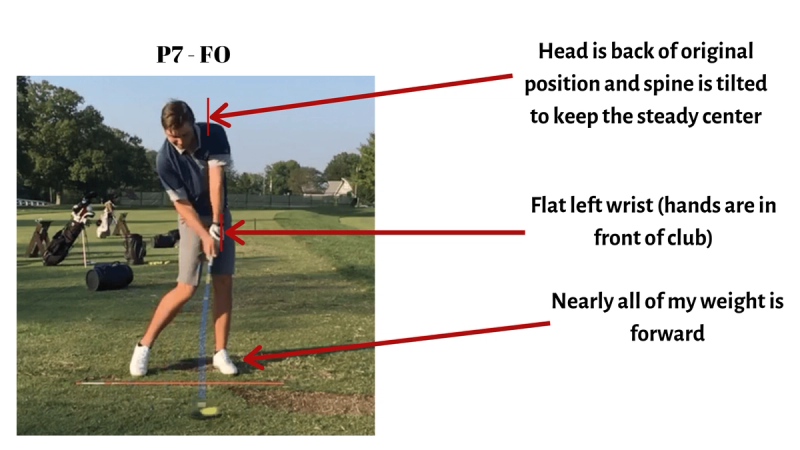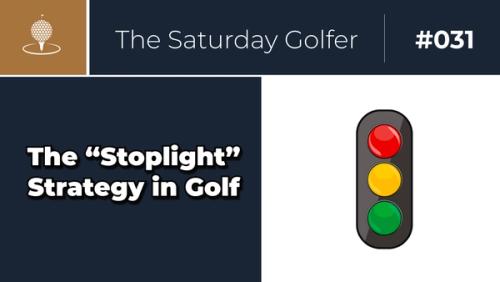Looking for part 2? When it is released, you will receive an email, so be on the lookout!
In today's lesson...
- You will learn the least and most effective ways to learn the game of golf
- You will learn what the difference between "keeping your head down" and "keeping your head steady" in the golf swing means (and yes, there is a MAJOR difference)
- You will learn why Jack Nicklaus spent hours working on the steady head in his golf swing (hint: it has to do with the "low point" of the swing)
Wouldn't it be awesome if every time you showed up to the course, you knew that you would be breaking 90 and striking the golf ball consistently?
Hey there, I'm Zach Gollwitzer, the creator of The DIY Golfer, where my mission is to make golfers more consistent in just a few hours a week through advanced practice strategies and timeless instruction.
Over the last few years, online golf instruction has exploded with tons of programs for improving your game. It's not hard to find instruction online, but it is hard to find the instruction you can actually trust online. Many videos teach golfers how to fix things, but fail to reveal why a certain fix works.
What does this result in?
It results in a never-ending loop where you fix one thing and break another. It's like the game of "whack-a-mole" where you’re constantly waiting for the next problem to pop up.

I don’t want you playing “whack a mole” with your golf game. I want you to unplug that neverending game altogether.
Just think... Have you ever fixed your backswing to later discover that your alignment is way off? You then realize that because your alignment is off, you actually didn't fix your backswing, and once you fix your alignment, you have to re-fix your backswing? It sounds confusing because it is.
Trust me, I’ve been there a hundred times. I know how this story ends.
There are tons of ways to improve your golf game. To name a few, you could...
- Buy better golf clubs, training aids, and equipment
- Get in-person lessons from the local club pro
- Trial and error
- Online membership sites
- YouTube
- Online training courses
All these methods work to some degree, but do any of them provide lasting results that make you a more consistent golfer?
To evaluate each method, I have mapped each on a 2-dimensional axis where the variables we are comparing are cost and effectiveness.

Let's walk along this chart and see how different methods of learning result in different outcomes.
First up, trial and error.
With some sports, trial and error may be a good way to learn, but in golf, there are far too many components to consider. If you play golf purely for the enjoyment of breathing fresh air and getting away from it all, trial and error might be an option. Even then though, you might find yourself frustrated while you are supposed to be relaxing!
Next up, YouTube.
There are tons of awesome instructional videos on YouTube; not to mention, it's free. If you are motivated enough, YouTube may be the only thing you'll ever need.
Where this method falls through the cracks for a lot of golfers is for the same reason many of us pay for a gym membership--accountability.
We all have the opportunity to go for a run. We all have the opportunity to buy some free weights and build a gym in our basement. We all have the opportunity to follow exercise programs on YouTube.
But yet... Many of us, myself included, still pay between $20 and $100/month for the accountability that a paid program gives us.
Similar to YouTube, you can also learn golf from membership websites.
If you ask me, golf membership sites are extensions of YouTube. Yes, they may have some additional perks over a quality golf YouTube channel along with a little more accountability, but we’ve all seen it happen before. You sign up for the membership site, watch a lot of videos, and slowly become de-motivated until you realize you are paying $10/month and not improving your game. Just like a gym membership, it’s on you to show up.
Next, equipment and training aids.
You might be surprised to see that I put equipment and practice aids this high on the list.
The reason? Because believe it or not, having good equipment and high-quality practice aids/tools is critical to your success in golf. Yes, they can be expensive, and yes, it is difficult to know which ones to buy, but they are nevertheless important. More on this later.
One of the better methods for learning golf is an online training course.
If you can find yourself an instructor that has spent time mapping out a comprehensive, online training program, then you might be in business. Online training programs provide you many of the benefits of in-person instruction without the hefty price tag. I have a little bit more to say about this, but for now, let's move on.
The last and most obvious way to improve your golf game is in-person lessons.
If you ask me, there is genuinely no better way (assuming you have found a good instructor) to learn the game of golf. You get immediate feedback and are held accountable to show up to your lessons and practice what you've learned.
If you have both the _time_ and the _money_ to take in-person lessons _and_ you are confident your pro knows what he/she is talking about, then I'm not sure you need to waste any more of your time on this video. In fact, you should probably shut this video off right now and find something more entertaining to watch.
But if you only have a few hours a week to devote towards golf, want the accountability of in-person instruction, and don't want to spend a fortune, I think I have the exact solution you are looking for in this 3 day training series.
Like I mentioned before, trial and error is difficult in golf because there are so many things to think about. Let's take the golf grip for example. Most golfers know a few things about the grip such as:
- Strong vs. Weak
- Interlock vs. overlap
But not many golfers know these additional components of the golf grip, which are all critical to your success:
- How your grip determines the power in your swing (High vs. Low power grip)
- How the grip affects your release action (Finesse vs. Power)
- How different grips will cause different positions at the top of your swing
- How grip size can influence ball flight
- How grip pressure can be different depending on the shot you hit
These could all be resolved through trial and error, but it would take years! Not only that, but I could do this with several other topics in golf. The grip only scratches the surface. What about buying golf clubs? Impact physics? Or even course strategy?
I could rant for hours on this subject, but talking doesn't qualify me to teach you golf.
The truth is, I'm not a 3-time PGA Professional of the year or a 2-time PGA Tour winner. I didn't grow up on a golf course. My parents never played. Heck, I didn't own a set of clubs until 8th grade.
I'm just a curious guy who became obsessed with the puzzle we call golf.
To give you a very brief overview of who I am, I'll start from the beginning. During my freshman year of high school, I fired a whopping 103 and secured a last-place finish in my District qualifying tournament. After that humiliating result, I promised myself that I would practice however long it took to qualify the following year.
After a triple bogey start in next year's District qualifier, I fought back and carded a 79, 1 stroke clear of the cut line for States. In the following two years, I finished second place in the District qualifier and ended up playing 4 years of Division 1 collegiate golf with a tournament-low round of 68 and an all-time low round of 64.
Numbers aside, I think the most important part of my story is the hundreds of hours I've spent reading books and learning how the golf swing and the mind work on the golf course.
I started The DIY Golfer back in 2015 to help me better understand the game of golf. Since then, I have read the Golfing Machine cover-to-cover 3 times along with almost every other popular instructional text.
Not only have I read a lot of books, but I've tested their theories in competition and on students who have worked with me previously.
One of the concepts that I have seen golfers shave multiple strokes immediately after learning is the proper way to use your head in the golf swing.
No, I'm not talking about the mental game of golf. I'm literally talking about how your head should move in the golf swing!
In this 3 part lesson, I am going to show you how to gain consistency in your ball-striking through the simple laws of physics.
To start, let's first take a look at a common problem in golf and how most golfers try to fix it.
Let's say you are struggling to contact the ball solidly. Maybe you are topping it with all your clubs. Maybe you are topping only your 3 wood. Or maybe you're just hitting the ball thin or off-center.
Most golfers would diagnose this as "I'm pulling my head up too soon".
They would then proceed to fix the problem by keeping their head down as long as possible.
But there are three huge problems with this scenario.
- I can assure you, pulling your head up is not the problem
- Keeping your head down too long can cause injury
- There are exactly zero professional golfers who consciously try to keep their head down on a full golf swing
Let me introduce something called the "2-lever Model" which I think might help us understand this a bit easier.
What you are about to learn actually comes either directly or indirectly from several sources. The Golfing Machine alludes to it, but it was explicitly introduced in a book called The Search for the Perfect Golf Swing by Alastair Cochran and John Stobbs. The idea here is that a golfer can be modeled using a primary lever, secondary lever, and "stop" mechanism.

Believe it or not, the golf world has already seen this model get a hole in one, and it is used for testing new golf clubs in facilities all over the world.
Without getting too complex in the short amount of time we have here, the main two things that make you different from that robot are...
- Your lead arm can bend in the golf swing
- Your lead shoulder physically has to move during the golf swing
What do these differences mean?
Well, if we want to be more consistent in golf, we should probably find a way to keep that lead arm straight throughout the swing and we should probably find a way to keep that lead shoulder as "centered" as possible.
What this robot also shows us is that the golf swing happens on an arc, and the low point of that arc happens when our lead arm and shoulders are perpendicular to each other.

If we use a little bit of logic here, we can reason that the relationship between the low point of the swing and where the ball sits on the ground will determine whether we hit the ball solidly or top it.
Since your head and lead shoulder are connected, it makes sense why keeping your head steady during the golf swing would help you make more solid contact. You are effectively "controlling the low point".
This conclusion also might explain why Jack Nicklaus would stand with his instructor, Jack Grout for hours hitting balls while Jack Grout held a club atop his head. Jack was training himself to keep his head steady, and he talks about the importance of this in many of his talks and instructional texts.
It is also no mistake that nearly all professional golfers keep their head steady during the backswing.
No, it's not the "secret move". Don't ever listen to someone who tells you there is a secret move in the golf swing. At best, this is just one very big piece to the puzzle we call the golf swing.
At this point, you're probably thinking the following things:
- This is way too complicated!! I want my golf game to be simple.
- What is the difference between keeping your head down and keeping it steady?!
- How is a robot going to help my golf game??
To that, I'll defer to a wise man named Albert Einstein:
"Everything should be made as simple as possible, but not simpler."
In today's world, there is a flood of information coming at us every day. We are always asking for the "30-second summary".
You can break 90 on a consistent basis without practicing 20 hours a week, but you can't do it if you don't understand the game you're playing. For some reason, the golf industry has bought the idea that game improvement can happen without studying the game.
Does a surgeon perform heart surgery without studying how the heart works?
Does a wise investor start a hedge fund without understanding how federal monetary policy affects interest rates? How bond yields work? Or what a sharpe ratio is?
The answer to all of these questions is a resounding NO!
Golf is no different. If you want to get the most out of your limited hours of practice, you need to understand subtle differences like the difference between keeping your head down and your head steady. It sounds futile but will make the difference between you shooting 88 and 98.
But don't worry, I'll help you every step of the way. By the end of this 3 part lesson, you will know more about the golf swing than 95% of golfers and will simultaneously learn to strike the ball more consistently.
In part 2 of this 3 part lesson, I will show you exactly how to keep your head still (not down) during the golf swing for more consistent strikes. Be sure to check your inbox on Friday because your golf game will literally change forever if you can get this critical skill down.
Next steps
The next lesson will be sent to your email soon, but in the meantime, there are two things I'll ask of you:
- If you haven't already, go get your free practice plan. It is a great complementary resource to go along with what I am talking about in this 3 part lesson!





